Interview: Dr. Frigga Kruse and Asta Mønsted talk Polar Archeology and PAN
27 May 2021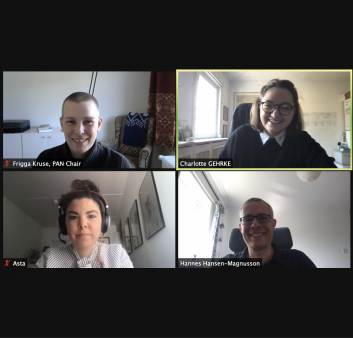
In late April, we got the change to chat with polar archeologists Dr. Frigga Kruse, a polar historical archeologist based at the Institute of Ecosystem Research at Kiel University in Germany, and Asta Mønsted, a PhD researcher at the University of Copenhagen in Denmark, about their work in the Arctic and the Polar Archeology Network (PAN).
🔊 You can listen to our conversation by clicking on the audio player icon next to each interview question.
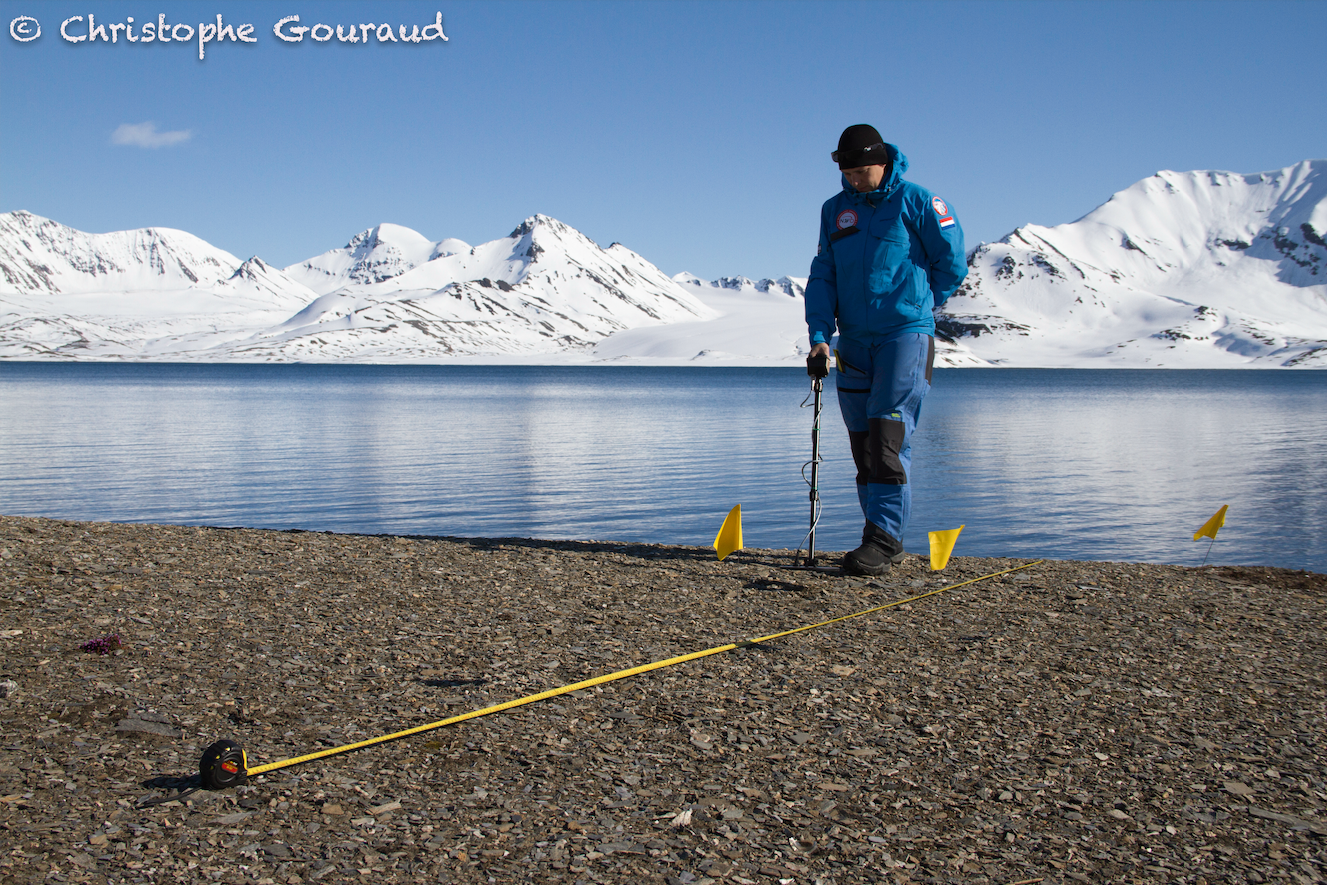
Dr. Frigga Kruse:
I shall make a start on this question. I went to school in Papua New Guinea, which is near the equator, as you may know, north of Australia, and drifted back to Europe thinking well, am I going to go back to my home country? Where am I going to go if I don’t go to Germany? I went to Glasgow, I did four years of Bachelor in geology and archaeology, and started to love everything that was under my feet. And I would like to say the rest is history. I don’t know. The rest is archaeology.
Asta Mønsted:
Where did I start out? Actually, I studied to become a teacher. And then one day, I would think “No, I’m not on the right shelf.” And I looked at ‘history’, because I thought that surely that is going to be me. And then archaeology popped up. And I thought, “wow, I mean, I can sit with my fingers in the soil!” And I have never regretted it since.
Dr. Frigga Kruse:
So, my bachelor’s dissertation was actually on rock art in northern Germany. Northern Germany only exists because of the last ice age. Without the moraines we wouldn’t be above sea level. So, it was a good start. But in my master, I did forensic archaeology. So again, not quite Arctic, not quite polar, yet very interesting. And then I did something else. For a few years, I worked as a geologist in the north of England. And then I got to work in mining history and industrial archaeology and on industrial heritage. And, you know, when you first think archaeology, everybody sort of wants to do Egypt or the Romans or something like that, just like most geologists think of volcanos when they first go into the subject, but the more I spent my time in Newcastle, the more this kind of industry and industrial heritage really intrigued me. So, when I saw a vacancy for PhD in mining history and industrial archaeology in Svalbard, halfway between the North Cape in Norway and the North Pole, it really spoke to me because of the mining history, and the industrial archaeology involved. So that was my first step into the Arctic. And in 2008, I did my first fieldwork campaign in Svalbard looking at other mining sites and industrial heritage.
Asta Mønsted:
I was born and raised in Greenland. So, I was already in the Arctic. And my mother had been working as a museum guide. So, she was taking out the tourists and we were looking at the graves and I thought it was very interesting. But somehow it did not come on my mind before I started I before I came across it on this website. And so, I jumped in archaeology and sure, everything was sort of interesting. But I hadn’t found my niche yet. And then I landed that this student job at the National Museum in Copenhagen, and I was going to guide people around in these ethnographic collections. And so I, the next subject, the next exam just drove me to this. And ever since I have found an excuse to work with the Arctic and Arctic archaeology.
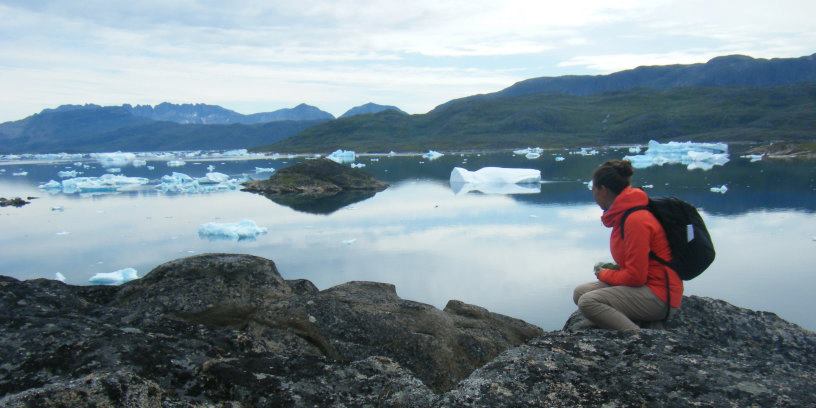
Dr. Frigga Kruse:
I have not made it out of Svalbard yet. Since my PhD, I’ve moved through a couple of postdocs more in the direction of environmental archaeology and historical ecology. In the meantime, I’ve done a smaller excavation in a mining settlement on a midden on a refuse heap to see and understand what the miners were living on and what they brought with them. And what they hunted locally, what they consumed, what found its way back onto this particular midden. And although it was only a very small excavation, already in 2016, the analysis and interpretation of it took us the best part of five years. The article has only just come out. My current project is called “Timeless Arctic”. And it is a project based in Svalbard: using commercial hunting, and particularly historical archaeological information on commercial hunting, in the reconstruction of human impact on the ecosystem. I’m not promising that I will have all the answers, but I’m using it as an aspect, as a stepping stone, to understand the picture we’re seeing today.
Asta Mønsted:
Right now, I’m doing my PhD project in Greenland. It’s about the Inuit architecture and landscape. I have been doing two field seasons in in Greenland. One was planned and executed in 2019 and then I had to rethink my 2020 field season due to COVID. But it was manageable, and it was revisitings of old Thule winter settlements and the first one was in Disco Bay, a very beautiful site. And the second one was around Sisimiut, where I could also combine it with a visit of my parents.
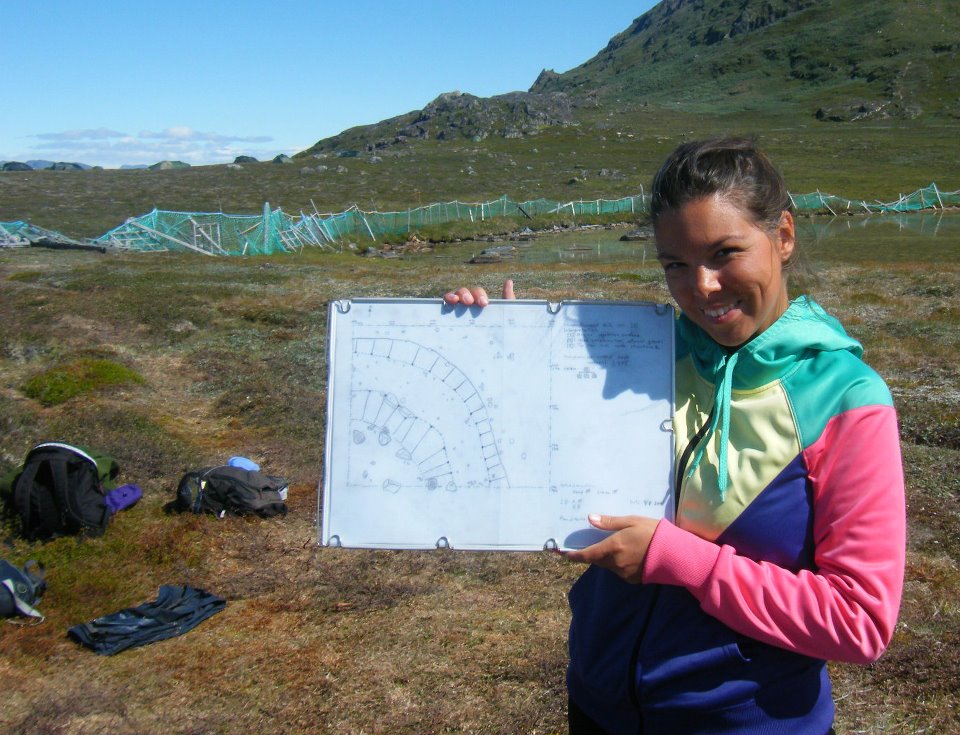
Dr. Frigga Kruse:
Yes, the Polar Archaeology Network, whose chair I currently am. I guess like many of our networks, it kind of rises and falls with those people who are on the board and who are currently driving it. I think it was established in 2007. I came into my PhD in 2008 and although I’ve always known some of the names, I didn’t quite realise that the network existed and how it worked. Otherwise, I probably would have joined it earlier. I really found out about it myself, let me guess, 2014, maybe 2015. Because at that point, Peter Jordan, who is the director of the Arctic Centre at the University of Groningen in in the Netherlands, took over chairmanship I think it was around about that time. And having a direct colleague, who is part of the show and who’s putting some of his time into organising its activities, you feel about it differently, you have very different link to it, not just a theoretical one. At one point, this must have been 2019, there was a call for new board members. And back in the day, I had an idea of what this network could do for me, and also what I could do for the network and how one hand would wash the other. And it just so happened that there wasn’t that much interest to be on the board, and I was catapulted straight into the position of chair. That was a rather steep rise to stardom, I think. But I didn’t mind, I didn’t shy away from it. In a way, you had a bit of not false freedom, but you had more of a free hand then to design it a little bit to give it shape. And I wasn’t alone. Peter Jordan stayed on as the vice chair, Ulla Odgaard had been secretary for some years, at first Max Friesen said that he will also be a board member, but now it’s Ivan Briz Godino, who’s from Argentina, and Karen Ryan in Canada. So, the board is five persons strong and representing different aspects of polar archaeology, different regions as well.
Dr. Frigga Kruse:
We have a couple of 100, I think it’s 255 members. And so now, that’s not too bad. I’m very happy with how that’s shaping up.
Dr. Frigga Kruse:
You did your homework I see. We go hand in hand with IASC, and we look into the different working groups they have. And we look into things like ICARP III, to filter out what it says about the social sciences and the humanities. Where the overarching research topics lie, the interest in working with a broad range of researchers but also different stakeholders in the communities. And although archaeology can cater to just about anything that IASC would like to see and that ICARP III is asking for. Because we don’t have that network structure, we’re ineffective as of yet.
Dr. Frigga Kruse:
So how to contact PAN? I always have this vision of, you know in the Batman films, where the mayor of whatever city it is just shines a light into the sky. Contacting PAN is a little bit like that at the moment. You either know someone who knows someone, or we’re currently difficult to find. This has something to do with outdated internet representation. So, I’m trying to get the outdated information off the web before I actually put something new onto it. So, we have a mailing list via MailChimp. It goes directly to a little survey, typing in your very basic contact information. And voila, that’s it.
Dr. Frigga Kruse:
Absolutely, archaeology cannot happen in isolation. Archaeology is a fun story, but meaningless unless we translate it through the social sciences and humanities, through the communities into education, musea, and other science communication. We need a larger network of more than just the archaeologists. So we are called polar archaeologist network, but hoping to make our membership service so far reaching that other heritage enthusiasts and heritage managers, heritage professionals will also find their way to us. And heritage professionals in a broad range. Yeah, I’m open to everyone and everything, basically, as long as they themselves also can see the link.
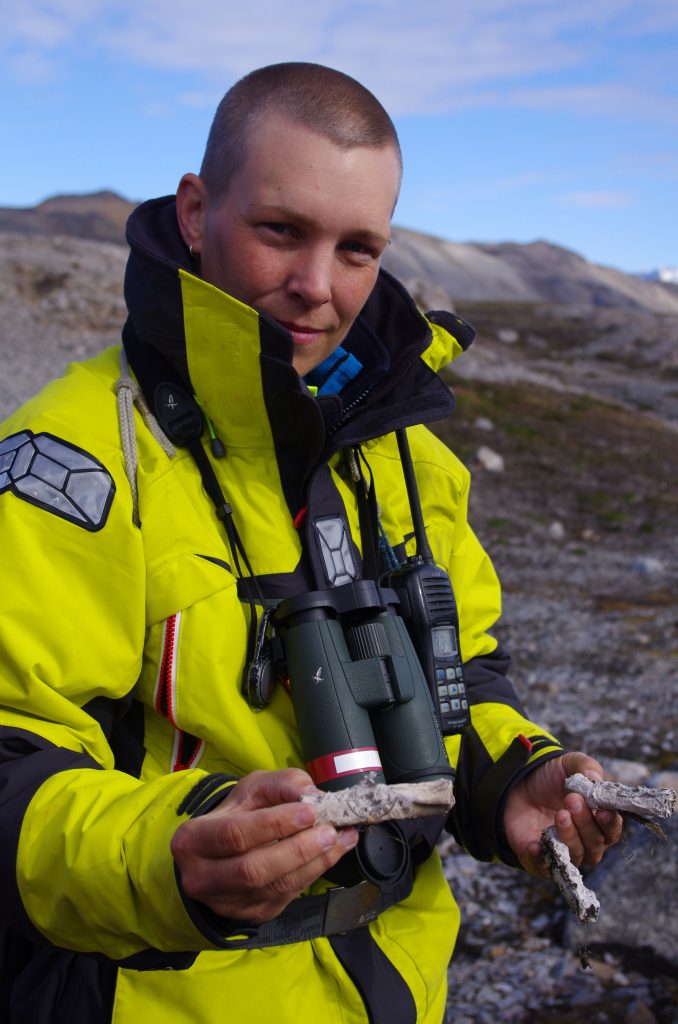
Asta Mønsted:
Well, right now, I am currently not a member. But this is definitely something that I have given serious thought. And I am hoping that this network can provide me with some information but also with some upcoming events or where we hopefully sometime soon in the future can meet each other again at conferences. So, I’m hoping to network over this platform.
Dr. Frigga Kruse:
The Arctic Science Summit Week that just passed is a good example. So, the Arctic Science Summit Week was completely online. And it was great for us archaeologists. I mean, here you are, you don’t know what to think of the network, you don’t quite know what to make of the science session and the community meeting. Should you travel all the way to Portugal to take part in something that you’re not quite sure? So, the online structure worked really well for us. Both the science session and the community meeting were well attended by a range of archaeologists and heritage professionals. And Asta was one of them, I invited her to take part in both. And she also had a poster at our science session. We had incredible scientific input from around the Arctic in the session, and a very good conversation and discussion about membership services and future events. So, I’m incredibly happy with how the conference went.
Asta Mønsted:
At the Arctic Sciences Summit Week, there was a place where you could start networking on their site. You could write your name, and you could write ‘Where am I from’, but also set up some keywords that I would be interested in Inuit architecture or something like that, and archaeology and history. And then I think you were supposed to be able to, to write in those keywords and see other people who also had them. And unfortunately, I could not really, I did not use enough time on this. But when I first saw it, I thought it was a good opportunity. And it might have worked pretty well.
Dr. Frigga Kruse:
This is something we discussed during the community meeting. In the near future, we want to come up with a regular lecture programme informing about archaeology, but then also have a question-and-answer session or even drop in some mentoring session for early career researchers to start engaging straightaway with researchers in the field and asking questions that might be important to how to get Arctic fieldwork experience, because it’s incredibly expensive. So, my advice to early career researchers, especially with many things moving online, use the tools to become proactive. We hope to be one of those tools. There are others, search Facebook, send a mail, acknowledging your interest and coming up with two or three pointed questions.
Dr. Frigga Kruse is a polar historical archaeologist based at the Institute of Ecosystem Research of Kiel University in Germany. Since 2008, her main research area has been Svalbard in the Norwegian Arctic, intially with a focus on mining history and industrial archaeology, nowadays with a focus on environmental archaeology and historical ecology. In 2019, she took over the Chairmanship of the Polar Archaeology Network and enjoys meeting like-minded archaeologists and heritage professionals from across the polar and sub-polar regions. Her aim is to expand PAN’s membership services to meet the needs and wants of our community and stakeholders in polar cultural heritage. You can browse Kruse’s publications on Orcid and follow the progress of her Timeless Arctic project via its website or through the eyes of a famous polar bear. PAN currently has no up-to-date website but you can join our mailing list via our landing page.
Asta Mønsted is currently taking her Ph.D. degree at the University of Copenhagen where she examines the relationship between mythology and Greenlandic architecture and landscape through the sources of archaeology and Inuit oral tradition. You can follow her on Instagram @greenarchland.
This interview was conducted by the Arctic Relations team (Dr. Hannes Hansen-Magnusson & Charlotte Gehrke).
- From the Floe Edge: Visualising Sea Ice in Kinngait, Nunavut
- Bridging Knowledge and Action: A Polish-Norwegian Perspective on Arctic Science-Policy Collaboration
- Unpacking the Motivation Behind Wintering at Polar Stations
- Working the Ocean’s White Gold: A Nutshell History of a Living Bering Strait Tradition
- Political Participation in the Arctic: Who is heard, when, and how?